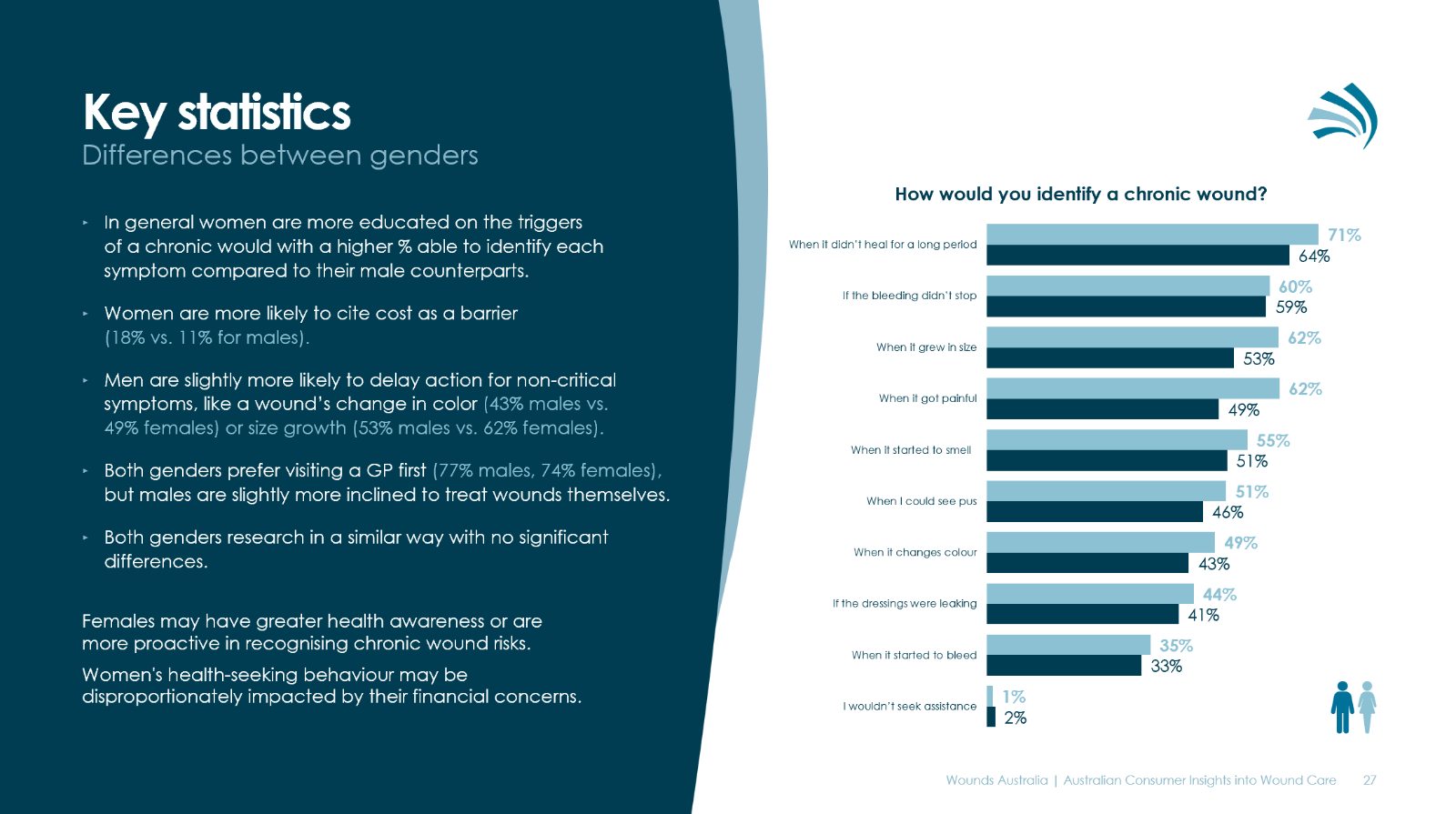|
Survey reveals Australia's 'alarming gaps in wound care knowledge': EXCLUSIVE
Thursday, 19 June 2025
|
|
A new survey conducted by Wounds Australia has uncovered surprising insights into what Australians know – and don't know – about chronic wounds. More than 450,000 people live with a chronic wound in this country every year, at an annual expensive to our health and aged care budgets of more than $6.6 billion. Wound care research shows that many costly and impactful wounds could have been prevented or healed sooner with the right treatment at the right time. Yet this groundbreaking research – the Australian Consumer Insights into Wound Care report, 2024 – into how people prevent and care for wounds has demonstrated how little people understand about wounds and how they become chronic, with too many relying on inaccurate sources of advice or delaying seeking treatment. 'Common sense is the most important factor.'Wounds Australia asked a representative sample of 513 people around the country how they treat their wounds, where they find advice and how they stop a wound from becoming chronic. Topline findings include:
 Education key to shifting attitudesWounds Australia CEO Jeff Antcliff commissioned the research and says that common misconceptions need to change in order to shift the needle on care outcomes. "It's our mission at Wounds Australia, as the country's sole national peak body, to reduce the harm caused by chronic wounds and there are so many steps between incurring an acute wound - a cut, graze or other break in the skin - and it developing into an expensive and painful chronic wound," Mr Antcliff said. "This research has given us an important insight into exactly where the process is breaking down - in caring appropriately for that initial wound, in understanding the warning signs of a chronic wound, and in knowing where to seek help and when. "It's not good enough that 10% of Australians don't know how to identify a chronic wound, or that 18% feel they can't afford treatment. Through the Be Wound Aware campaign, we plan to arm people with the fundamental information they need to get appropriate care."  Read the researchRead the full Australian Consumer Insights into Wound Care report, 2024 by clicking the button below. Media contact:
Haley Chartres, H^CK Director |
